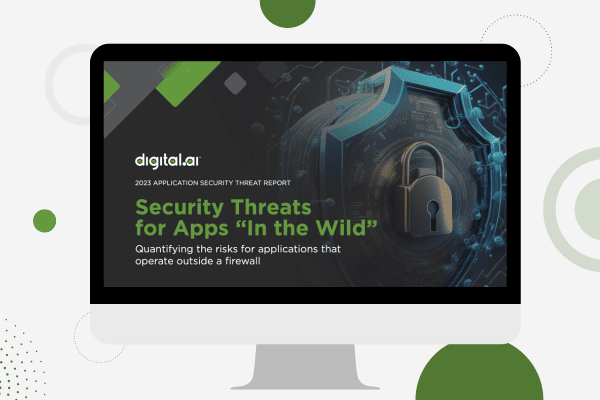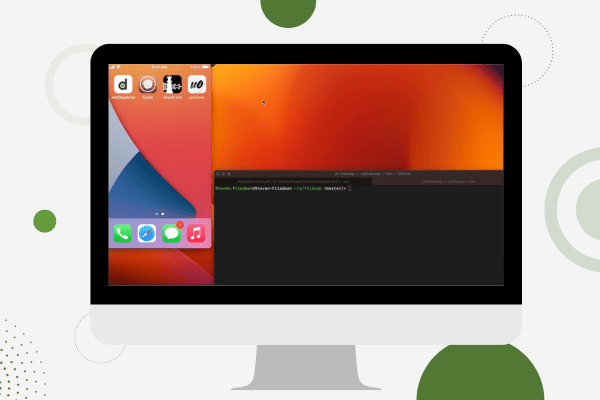Mobile Application Management
Mobile application management (MAM®) refers to the workflow for security, governance, and distribution of mobile apps in the enterprise.
Table of Contents
Mobile application management (MAM®) refers to the workflow for security, governance, and distribution of mobile apps in the enterprise. Best-of-breed app management provides app-level security for any app, deploys apps to every user in the extended enterprise because it is device management agnostic, manages the complete app lifecycle, and enables multiple app distribution methods, including an intuitive, custom-brandable enterprise app store.
Digital.ai App Management gives customers the ability to securely reach every user in the extended enterprise and drive adoption of critical apps that build and transform businesses. A Blue Hill analysis of the industry revealed Digital.ai App Management to be the best mobile application management (MAM) and enterprise app store solution in the industry.
Enterprises leverage our mobile application management platform for:
- Government-grade mobile app security that protects access to sensitive information at the app-level
- An enterprise app store for deploying any app in the extended enterprise
- Security, management, and analytics policies without requiring code modifications or SDKs applied via app wrapping
- Universal app distribution options for getting apps deployed and adopted quickly
- Seamless mobile enterprise integration with development platforms and identity providers
- The industry’s best-of-breed app lifecycle management workflow
Importance of mobile application management
Mobile application management enables comprehensive, fine-grained security policies, visibility and management controls to be applied to individual apps — effectively bringing apps “under management,” but without restricting access to the tools and data people need to do their jobs. The ability to apply security and management policies at the app level — including on bring your own devices (BYOD) — provides new options for organizations to secure a wide range of potential attack vectors and risks.
No longer are workers stuck in a heavily locked-down office to conduct work of a sensitive nature. Mobile application management helps balance the unique needs of IT and remote users.
Mobile app management vs. mobile device management
When it comes to securing apps and data, mobile device management (MDM) falls short because it only addresses security at the device level. Trying to achieve compliance with IT policies in an organization, focusing only on security at the device level, can be very limiting for end-users. Often with MDM, compliance translates to turning off features, allowing monitoring of usage, location and data, and/or enforcing the use of specific browsers or operating systems (e.g., Android and iOS). Especially for a mobile strategy, this is not at all effective. Security and usability must be better balanced.
Mobile application management ensures high levels of security — even for workers with unmanaged devices (e.g., personal Apple and Android devices being used for work purposes). MAM applies additional protection around apps and data that goes beyond the device control provided by MDM, enabling even the most regulated industries to achieve necessary levels of app and data security.
MAM can be employed without requiring device management, and integrates with mobile app deployment solutions, simplifying the task for app administrators and developers to apply fine-grained security policies such as:
- FIPS certified encryption
- VPN
- Two-factor authentication
- Mandating specific OS functions prior to app launch
Organizations need mobile app management
While MDM is still an effective approach for limited tasks such as setting up mobile devices and managing mobile email, it does not address security for mobile apps. MAM is needed to enable the secure use of mobile apps for end-users within the enterprise or public sector, and to provide the highest level of mobile security with policies and management at the application level.
To avoid sacrificing usability in favor of security, and to provide secure app lifecycle management, a standalone MAM must be employed, sometimes in addition to an MDM. Having the ability to secure apps from development through deployment provides a separate layer of security beyond device-level controls. Adopting a MAM enables scenarios such as:
- Research analysts in the intelligence community benefitting from timely information provided by field agents in near-real-time.
- Cross-agency teams securely collaborating and receiving data in real-time with those in the field via mobile devices.
- Healthcare providers instantly gaining access to patient records, trading treatment notes and coordinating care with other physicians.
- Financial analysts and portfolio managers leveraging up-to-the-minute market information to improve communications with clients, including conducting in-person portfolio reviews.
How mobile app management fits into enterprise mobility management
Mobile application management aligns to support enterprise mobility management (EMM) creating a safe, compliant app space with an app-level security layer, while still enforcing device security posture, as appropriate. With trusted and secure mobile access to critical back-end systems, work that previously required being on a managed device or working in a restricted office due to constraints of MDM can now be accomplished in the field.
Enterprise mobile app management also circumvents the issue of securing apps and data for BYOD users, contractors and business partners who either do not want to enroll their devices, or already have their device enrolled through another MDM. The less a device is locked down, the more effective a user can be, boosting investments made in devices, wireless services and management infrastructure.





